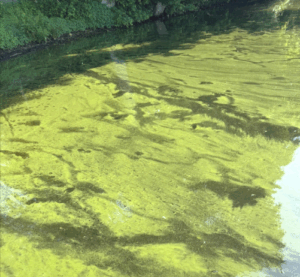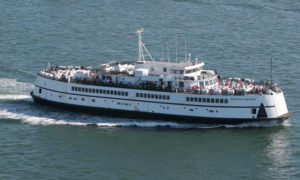
A North Atlantic right whale photographed by the Woods Hole Oceanographic Institution under NMFS Research Permit #17355.
PROVINCETOWN – Researchers out of the New England Aquarium and Woods Hole over the past year have been advancing the use of drones for field research of various whale species.
Using aerial photography to measure the health and growth of whales via photogrammetry – a 3D measuring process using overlapping images – scientists have been able to document the growth of North Atlantic right whales off of the New England coast, in addition to taking part in killer whale research in Alaska this past June.

Killer whales spotted during field research in June. Photo taken by John Durban and the New England Aquarium under NMFS Research Permit 22306
Scientists say the far reaching and non-invasive methods are helping scientists understand cetacean population dynamics in places and weather conditions in places too dangerous for boats to reach, providing crucial knowledge in their adaption to climate change and other human-related events such as oil spills.
“Scientists have decades of population data on both North Atlantic right whales and killer whales in the North Pacific, and now we can use photogrammetry to gain new insights on whale health to better understand the causes of population changes,” said Dr. John Durban, chair of the Aquarium’s Spatial Ecology, Mapping, and Assessment program.
As right whale migrations are altered by climate change and the movement of their feeding zones, creating ever more complicated challenges in managing their interactions with humans, the extended reach of aerial photography is proving a useful tool in monitoring their health and movements.
“One of the things I love about photogrammetry is it’s a truly non-invasive science,” said Dr. Durban. “We can give whales a health check without them ever knowing we are there.”
























